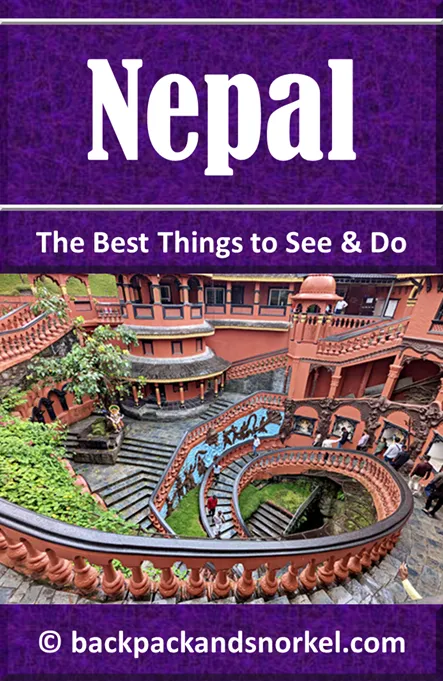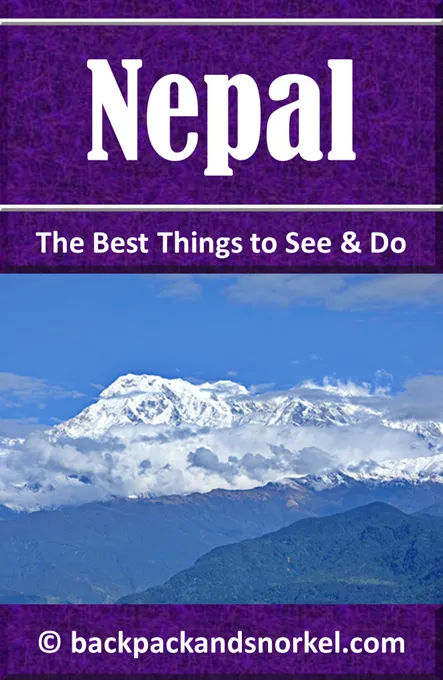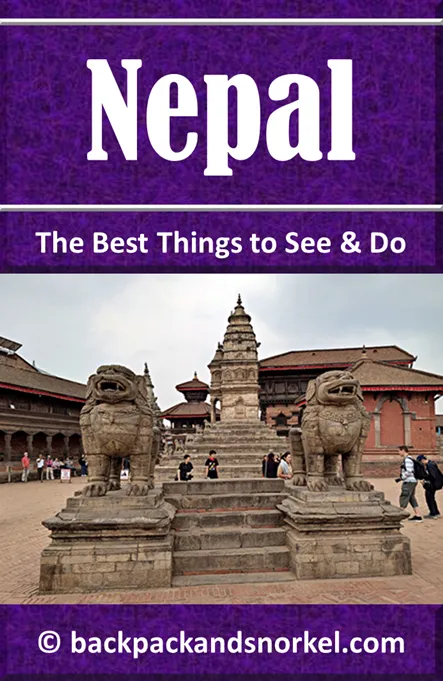Jamchen Lhakhang Monastery: Discovering Tranquility and Tibetan Art in Kathmandu - Nepal Purple Travel Guide
(map, reviews)
This is Premium Content! To access it, please download our
Backpack and Snorkel Purple Travel GuideThe name Jamchen Lhakhang comes from Tibetan:
‘Jamchen’ means Great Compassion, often associated with Jampelyang (Manjushri), the bodhisattva of wisdom.
‘Lhakhang’ means temple or monastery.
Together, the name reflects the monastery’s dedication to preserving Tibetan Buddhist teachings, especially those emphasizing compassion and wisdom.

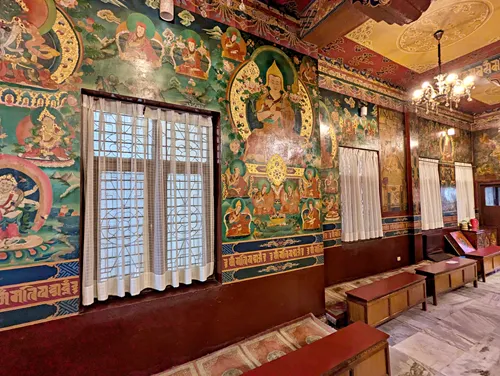
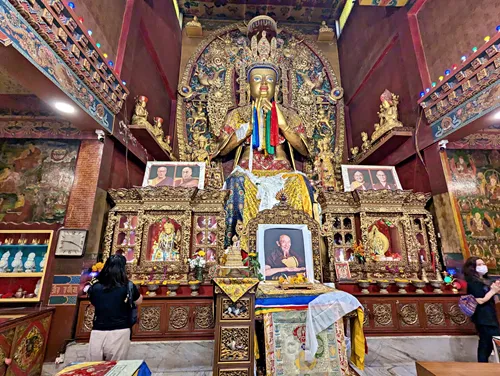

Here at Backpack and Snorkel Travel Guides, we typically promote self-guided walking tours.
But we realize that not everybody likes to walk by themselves in a foreign city. So, just in case that you rather go with ab guide: NO PROBLEM! Please see the Viator tours below.
free GuruWalk tours
paid Viator tours
Purpose and Religious Role of Jamchen Lhakhang Monastery
The monastery was founded by Chobgye Trichen Rinpoche in 1985. He was one of the most respected lamas in the Sakya school of Tibetan Buddhism and served as the 41st Sakya Trizin, the head of the Sakya tradition. Chobgye Trichen Rinpoche was also a spiritual teacher and close advisor to the Dalai Lama.
Jamchen Lhakhang Monastery serves as:
A center for Buddhist education and spiritual training,
A residence for monks, many of whom are Tibetan refugees or Nepali followers of the Tibetan tradition,
And a community space for local devotees to gather for prayer, teachings, and religious festivals.
The monastery also plays an active role in prayer rituals, pujas, and meditation practices that are open to visitors, especially during significant Tibetan calendar days.
What to See at Jamchen Lhakhang Monastery
Golden-roofed temple adorned with traditional Tibetan artwork, statues, and colorful prayer flags.
A 40 ft (12 m) tall, gilded statue of Maitreya Buddha, also known as the Future Buddha. This impressive figure is the focal point of the monastery's main prayer hall, adorned with intricate decorations and traditional Tibetan Buddhist iconography. The statue represents Maitreya's anticipated arrival to renew the Dharma and bring enlightenment to future generations.
Beautiful colorful wall paintings and idols
A large prayer wheel (at least 16 ft (5 m) tall) in a separate beautifully decorated room near the entrance that you can turn yourself. Prayer wheels are integral to Tibetan Buddhist practice, embodying the belief that spinning them is equivalent to orally reciting the mantras inscribed upon them. This act is thought to accumulate wisdom and merit (good karma) and to purify negativities.
Back to your self-guided tour
Author: Rudy at Backpack and Snorkel
Bio: Owner of Backpack and Snorkel Travel Guides. We create in-depth guides to help you plan unforgettable vacations around the world.
Other popular Purple Travel Guides you may be interested in:
Like this Backpack and Snorkel Purple Travel Guide? Pin these for later:

